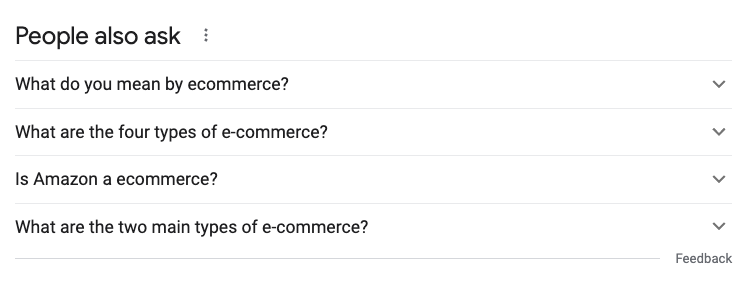The life of an SEO is similar to that of an engineer.
You design and structure data in your content backend so Google’s crawlers better understand what it’s all about, helping you to rank higher.
In the SEO world, structured data is better known as schema markup, and it’s mostly responsible for contributing to Google’s rich results, including snippets and “People also ask” sections.
Even if you’re familiar with some of these, below we highlight some of the most underused schema markups, particularly for e-commerce websites.
Let’s bulk up your store with structured data…
Schema Markup for E-Commerce Sites
1 – Organization schema
You know how when you’re searching for a well-known brand, and an entire snippet with company data appears to the right of your results page?
That’s an organization schema… and it’s super valuable if you have multiple brands under one umbrella. It helps search engines differentiate between offerings and brands.
2 – PriceSpecification schema
Will help Google understand your prices and match them with competitor’s products to find out if your offer is better or not.
For example, if someone searches for cheap Nike shoes, Google will look for this schema to gather more accurate data and prioritize it on the results page.
3 – Car schema
This is one example of when businesses should use a specific schema where possible instead of the more general Product schema.
If you’re dealing with cars, Google’s Car schema helps explain your business to the algorithm in more detail.
4 – Shipping schema
Big retailers use ShippingDetails markup to tell the algorithm their delivery information.
This is where you can include “deliver to [country]” data, whether shipping is free, expected delivery time, and more for crawlers to easily pick up.
5 – FAQ schema
Here’s a trick. You can include relevant customer queries in website category pages.
This can help your website appear in the “People also ask” snippet.
Schema Markup for E-Commerce Websites: Improve Your SEO
Hopefully this helps you structure data for more—and better—traffic. Good luck!


